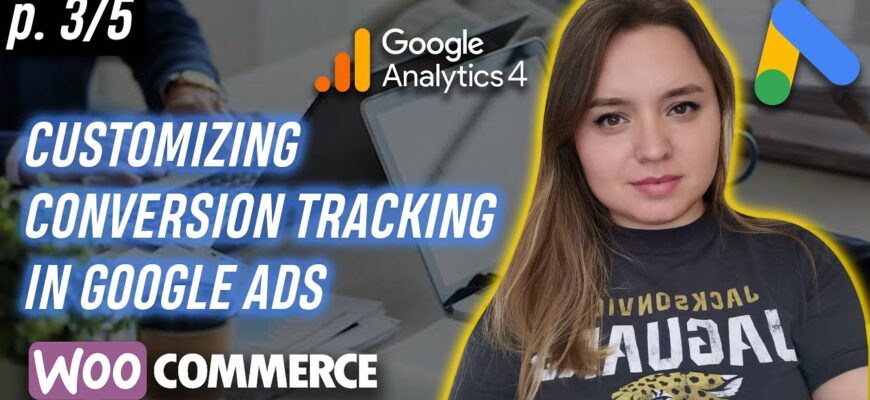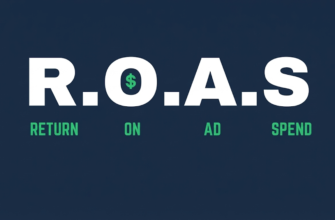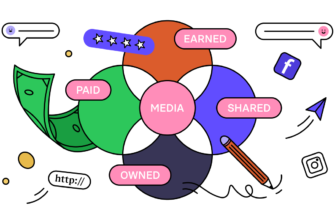- Setting up “Tag Purchase” conversions. Setting up connection with Google Ads
- Mandatory suspension of the campaign
- Adding a Buy Tag
- Purchase Tag Setup
- Additional data in “Product-level sales data”
- Configuring User Data Transfer
- Customizing Consent Settings
- Trigger setting
- Checking the correctness of the created tag
- Summary. Announcement of the next video
After setting up the fourth analytics, let’s now move on to setting up a further type of conversion called the “Buy Tag”. A conversion that belongs directly to a Google Ads account. This is not a conversion that relates directly to the fourth analytics. Of course, you can continue to use purchase, but I strongly recommend, as they say, from beginning to end do according to that manual, according to Google’s recommendation. With the transfer of all the advanced data and stuff. For the performance work for their correct operation or Google shopping as the book writes, respectively, to the AI that will be used by Google. So now we’re going to fine-tune another conversion.
Setting up “Tag Purchase” conversions. Setting up connection with Google Ads
What does it take to do this? You need to open your Google Ads account and finalize a couple of settings. If you remember, at the stage when you installed the plugin called Google Listings & Ads, in the settings you confirmed the connection with the Google Ads advertising account. It’s loading now, I’ll show you the full information. It also says “Disconnected.”
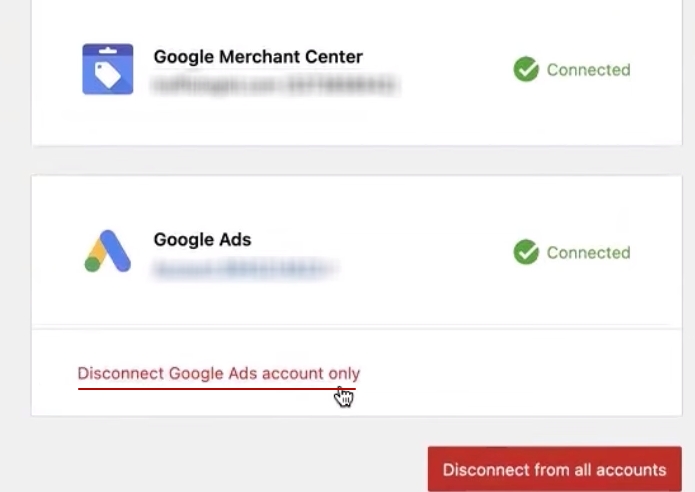
How many calls and sales will I get by ordering contextual advertising from you?
I need to calculate the conversion of my website Describe
the task
in the application
Calculate potential ad revenue Google
contextual advertising calculator
Why is this happening? Basically, you have sent a request for access to Google Ads. To get access to Google Ads, you click here and you need to confirm in the access to this account that the plugin actually has access to the campaign. So, “I’ll do this later.” It’s all procrastination, procrastination, not super important.
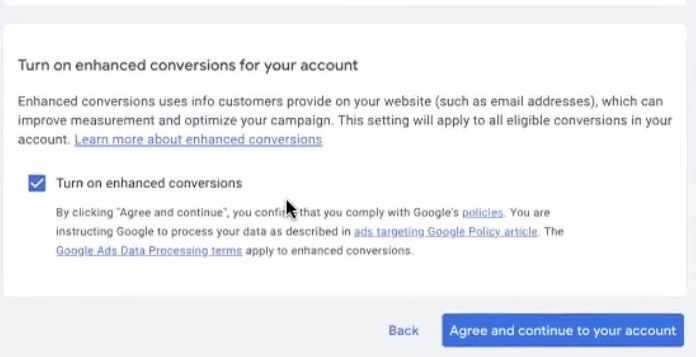
Mandatory suspension of the campaign
Next. Look, in the account necessarily go to the campaign that created, it may not offer to create, enter the payment data, and that’s the end of it. Now we stop in case we have entered the payment data so that there is nothing critical in the settings.

What do we do? We go to Goals settings, to Summary. There’s already some kind of purchase. Go to the settings.
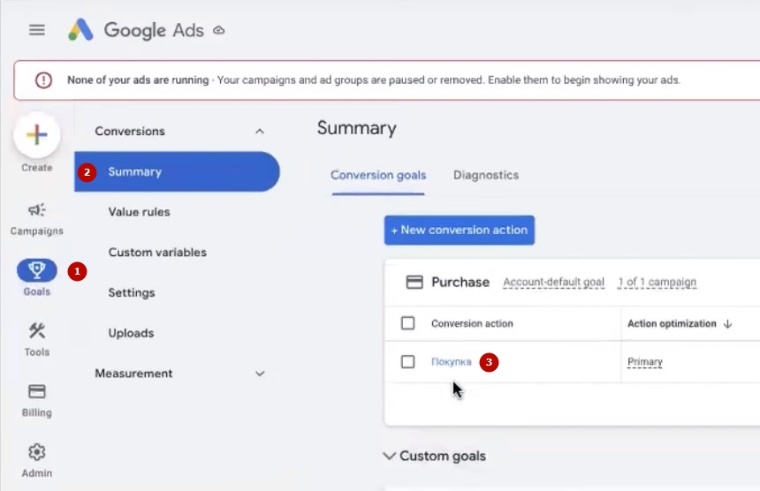
Adding a Buy Tag
Or so I’d rather show you how to do it originally. I’m going to delete this thing now and start over.
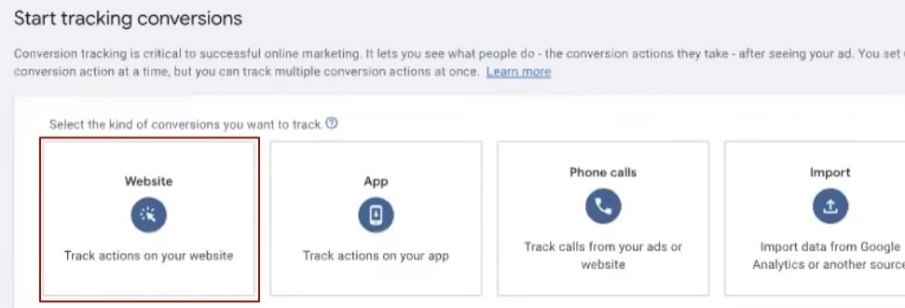
Click on “New conversion action”, select the website. Here we enter the name of the site that was.

Click “Scan” and wait for Google to figure it out. Then click on “Add Manual Conversion”,

select “Purchase.” You can call it something else, I’ll call it “Purchase manual.” Let’s call it “Purchase.”
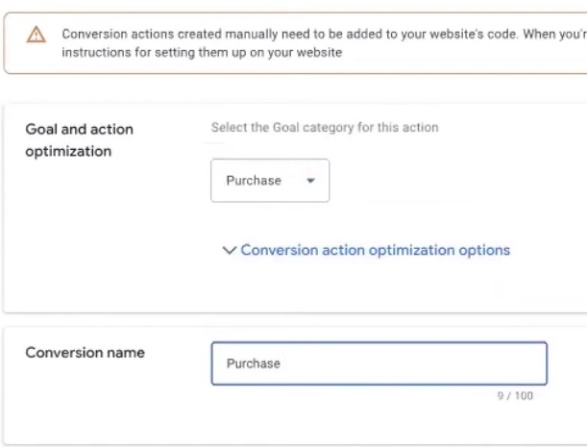
Moving on. Make sure to leave “Use different value” mandatory. “Each” stays.
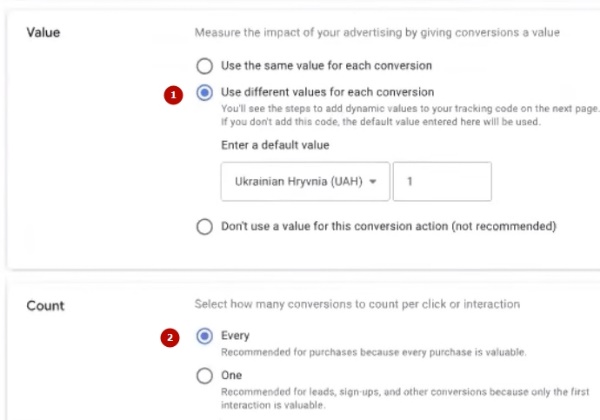
You can keep everything. I usually prefer the “Last click” attribution model. You can pick your own that you like. So far, so good. Press “Done,” “Save and continue.” Press “Done”. Next we see that we have created such a conversion, now we will customize it.
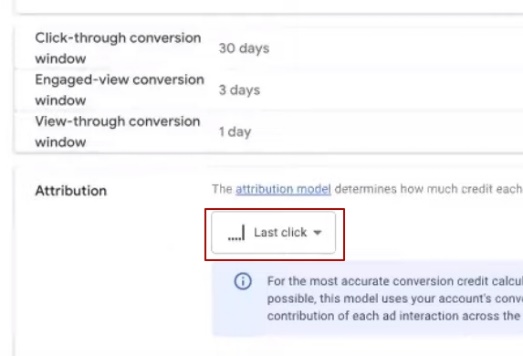
Purchase Tag Setup
Click on this conversion, go to settings, go to Tag Manager. Copy the Conversion ID,
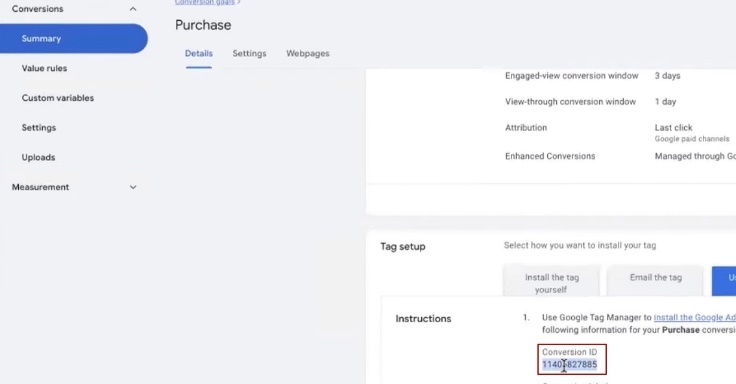
go to Google Tag Manager, click Tags. I suggest, look, this moment later Google may argue that we will add another Google tag, because in essence they are identical. I’m adding it in this format on purpose, deliberately, consciously.
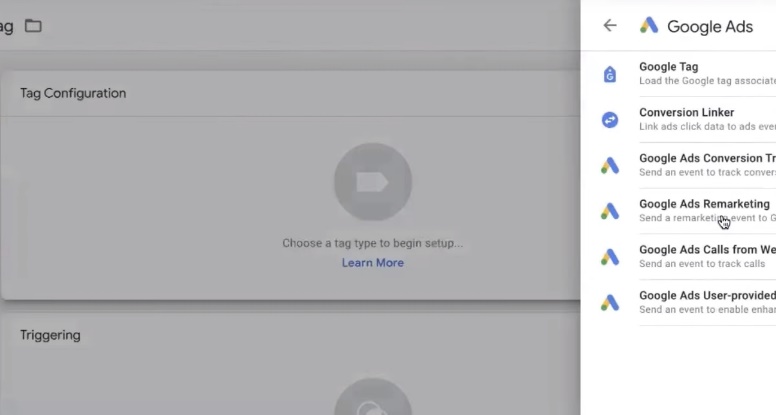
Go to Google Tag, insert Conversion ID.

In the triggers, select “Initialization.” This is where we write out “AW-id.” Save.
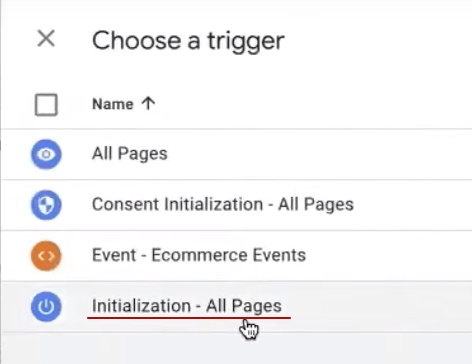
Go back to Google Ads, copy the Conversion ID again, if you have clicked somewhere, click “New” – “Tag configuration” – “Google Ads”.

Choose “Conversion configuration”.
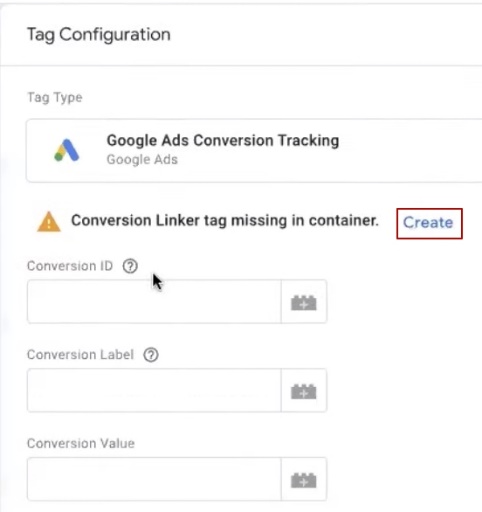
Here we create everything at once, just click the button “Save” and forget it.
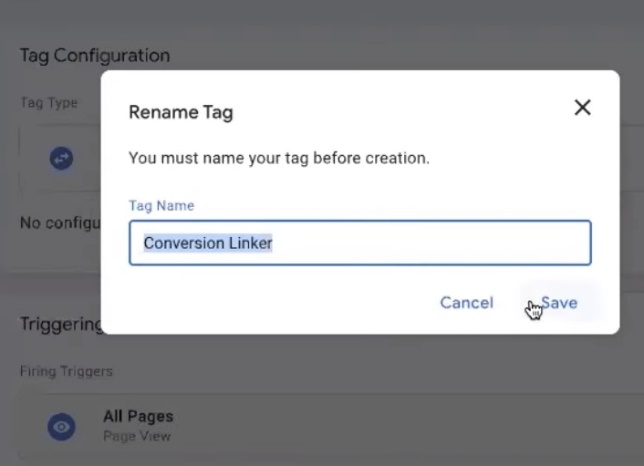
This is an important block for the green checkmark to appear. Paste Conversion ID, go back to Google Ads, copy our conversion label, paste it here. Here you need to select the value (revenue) that will appear. It is necessary to select the transaction ID, currency goes on and on.

Now we are going to figure out where to get the Conversion value. Remember, we have loaded a container with a lot of different parameters. Go back to the debugger, press Purchase, go to variables. Here we scroll down a little bit and look for what corresponds to Value. You see, Ecommerce Value is 2564. Go back to Google Ads, click the plus sign and look for Ecommerce Value. Found it.

The same goes for the Transaction ID. If this Purchase is not there – you just have to click preview in Google Tag Manager, go through all the steps and find the variables. Transaction ID is also there. Transaction ID, where it’s Transaction ID.
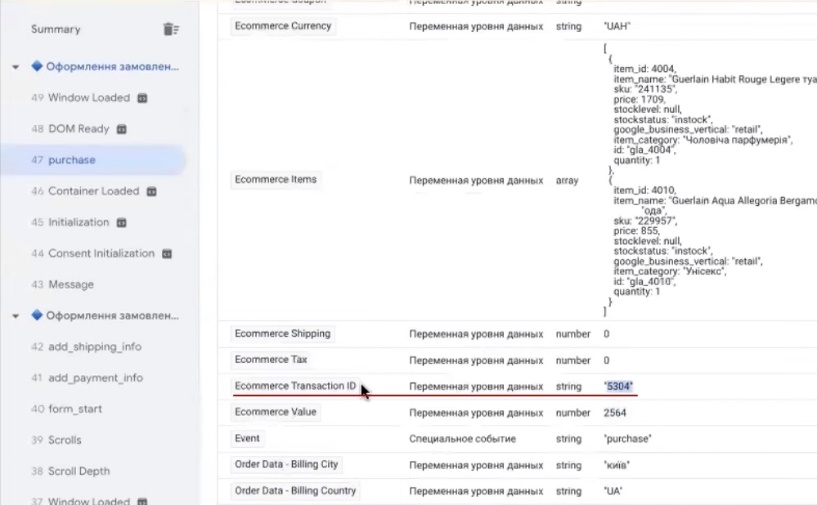
What else can we do? Currency code is needed. Currency is exactly the same as. “Ecommerce Currency. We can select Ecommerce Currency.
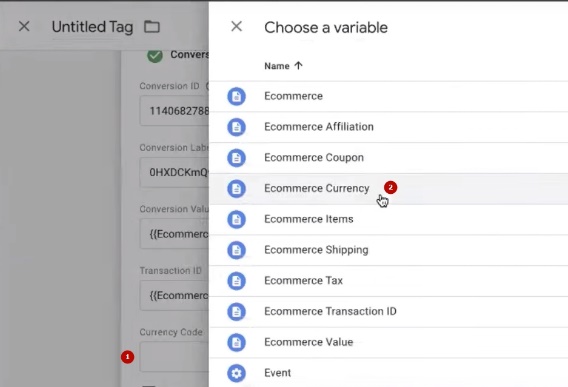
Additional data in “Product-level sales data”
Now the base is almost enough for customization, but let’s add data. What kind of data will it be? We will definitely add Product-level sales data. I definitely recommend it. It’ll take some work to transfer it, but I don’t see anything wrong with transferring it.
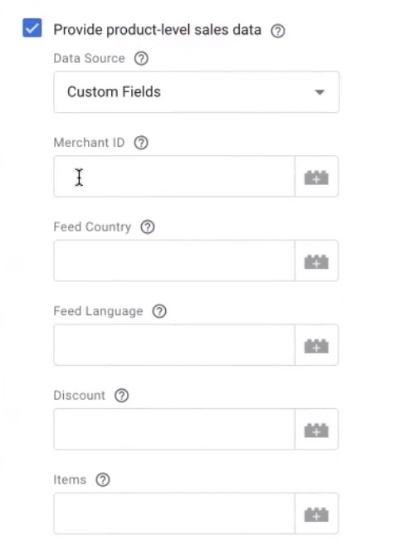
We need a Merchant ID. The Merchant ID can be found in Merchant. Insert Feed Country here. Feed Country is usually also written here. Go to feeds and there are Target countries – UA, Feed label – UA. Or if you doubt whether you are choosing correctly, you can go to this link and choose your country.

How many calls and sales will I get by ordering contextual advertising from you?
I need to calculate the conversion of my website Describe
the task
in the application
Calculate potential ad revenue Google
contextual advertising calculator
I’ll leave the country I have here. The language is the same. If there are multiple languages – if we go to Data Layer, we can potentially find the desired Country.

Maybe we can find Merchant Center, but I don’t see these parameters here. Payment method, status, coupons. I don’t see it. In principle, nowhere Merchant Center has been set. Nothing critical, you can set it manually. You don’t want to? You can skip these two blocks. Nothing critical will happen.
It’s the same with a discount. The discount can also be taken. It should be automatic. If it’s not here automatically, you can take it, Discount can be transferred. How does it get transferred? Let’s take Discount. Let’s see if there’s some, some phrase Discount.
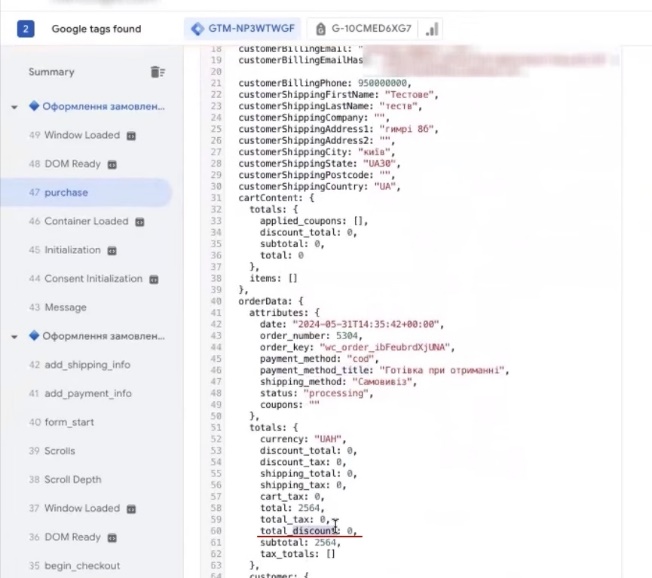
Showing all the options. What do you need? Cart. Now let’s create a variable on Discount. Press the plus sign. This way. Data Layer Variable.

Select here. Click cartContent. We’re already rolling customization. Not just like that. Discount_total. Or get one that matches yours. Discount_total is from here. I save it. I call it “data level variable”. I save it.
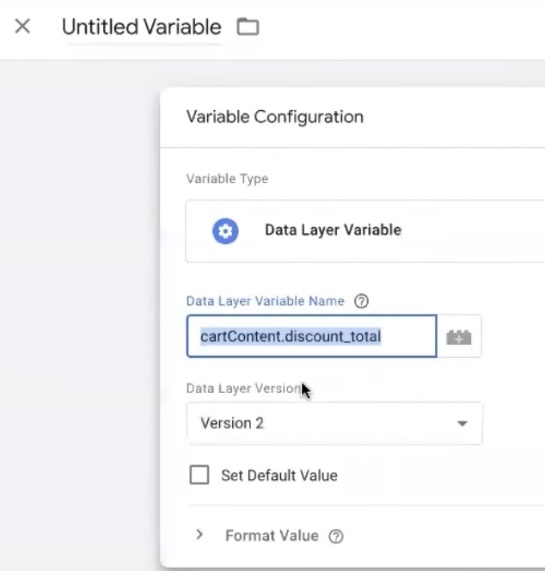
Next I need to pass items, but items are not just a set of some data. It must be Price, quantity and item ID. How do we get them?
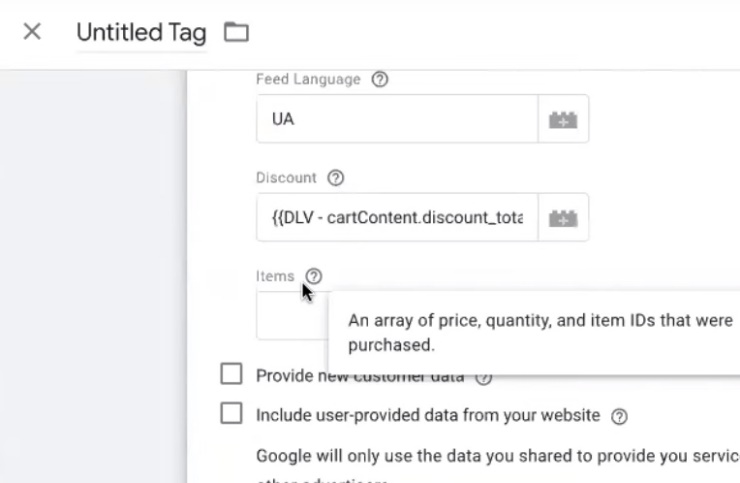
Now let’s do a few important iterations. First, we check this code so that it roughly matches what we have. See? The code is there. You need to find a block like this, simply called ID. See? It intersects several times. See, there’s one at the very end. The important thing here is to get the parameters right.

In this case, it will be as simple as possible. I take ecommerce, press plus, plus. Variable Configuration – Data Layer. Ecommerce, period. I take just item-s, as there are ID, quantity parameters. This, by the way, is quite convenient. Ecommerce.Items, DLV. Everything.
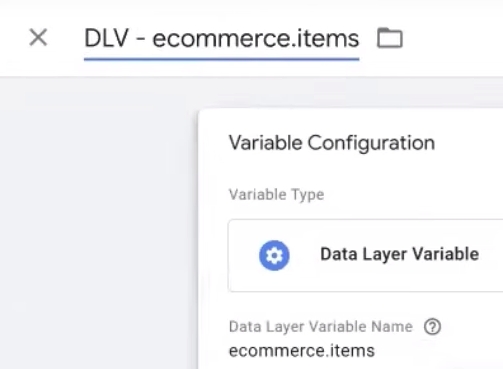
Configuring User Data Transfer
Next we can add a few items, some of which will be fundamentally important. It is necessary to pass User Data. User Data is exactly the phone number and e-mail, but you can pass a larger block of data. What is this larger block or smaller block I’m talking about? Click “New variable…”.
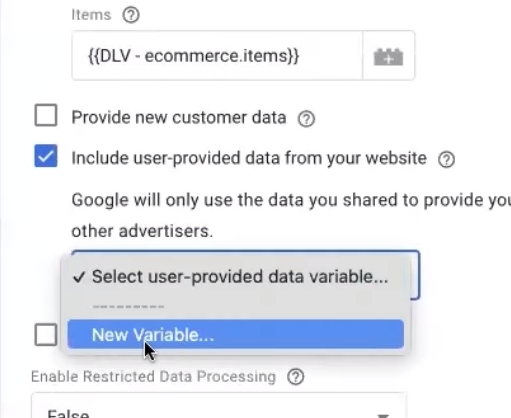
The tag called User-Provided Data opens. Be sure to select “Manual Configuration” and here we will start selecting all sorts of parameters, variables, to be exact. The variables that we need. The most important of which are email and phone. It’s important.
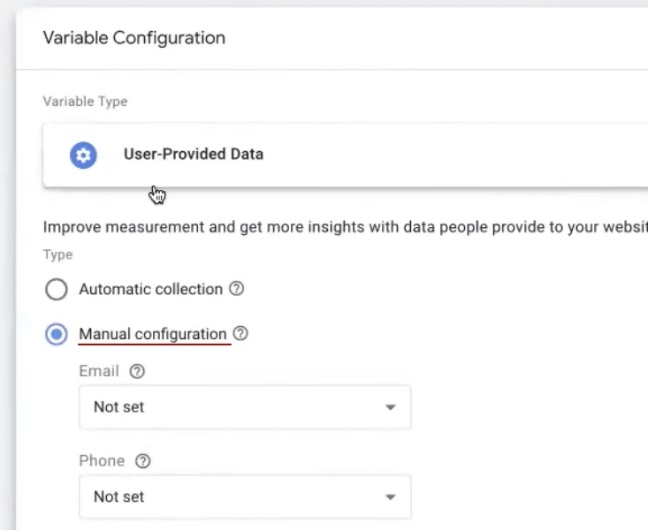
In email… Remember when you uploaded, imported the container for the fourth analytics there are a bunch of variables. The variables are ready. The only thing left is to select Billing Email Hash, and the same for phone – Billing Phone Hash.
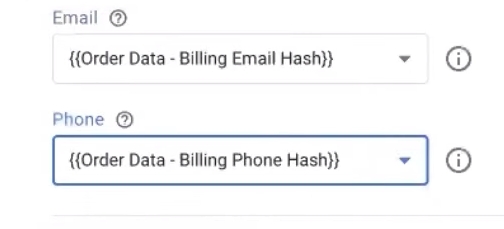
As for first name, last name, street, city, region, country and zip code – you can enter it only if you actually have a zip code in the data level. For Ukraine, perhaps, it is not relevant. If we choose Novaya Posta – there will be no index for Novaya Posta. Should I transmit this information for Ukraine or not? Without an index, it does not matter. If you are launching in other countries, such as Europe, Australia, Canada, States – it is desirable to go straight through everything. Is it all set? First Name Hash, Last Name Hash. There should be Street, City, Region, Country, Postal code.

Since I am doing this for Ukraine, it is not crucially important. There is no Postal code. To be exact, there may be a Postcode filled in, you see, but it’s empty.
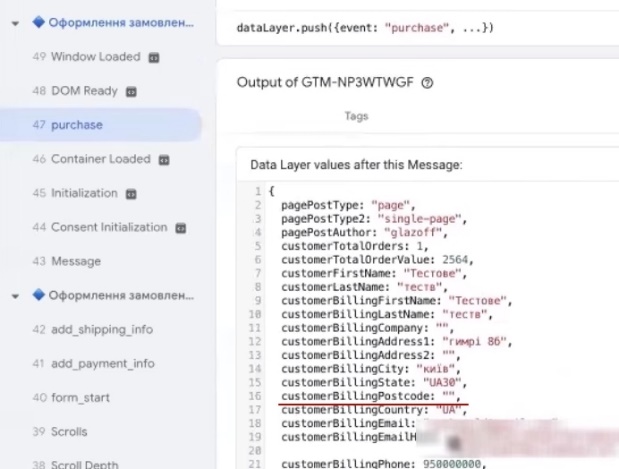
If it is empty, it will do a little worse for targeting rather than better. If you don’t have this data, it’s best not to fill it in. This is the most important database. Save it.
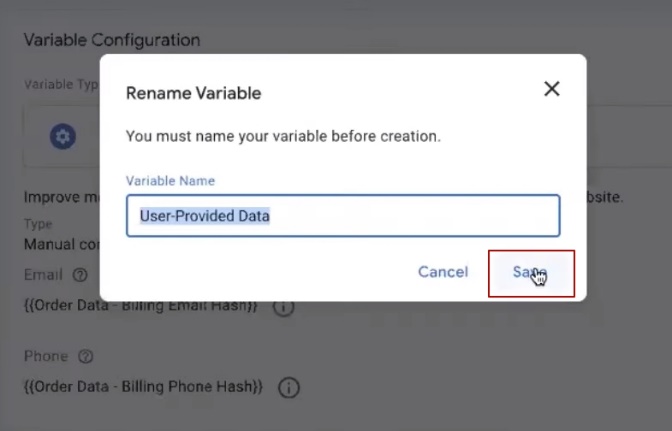
Customizing Consent Settings
Next, make sure you go to “Advanced Settings” in Consent Settings.
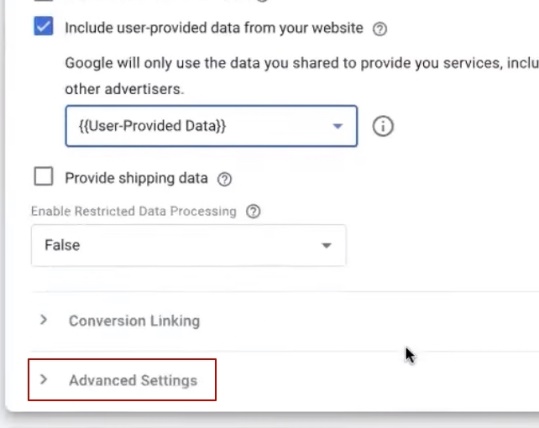
and here you must choose what is suitable and what is not. If you are in Ukraine, it is not included in the GDPR zone and the UK, you do not need an additional Consent Mode. If another country – you need Consent Mode – you choose initially according to the parameters, what you need to transfer. You can choose ad_storage or another attribute. There is no need to configure Consent Mode.
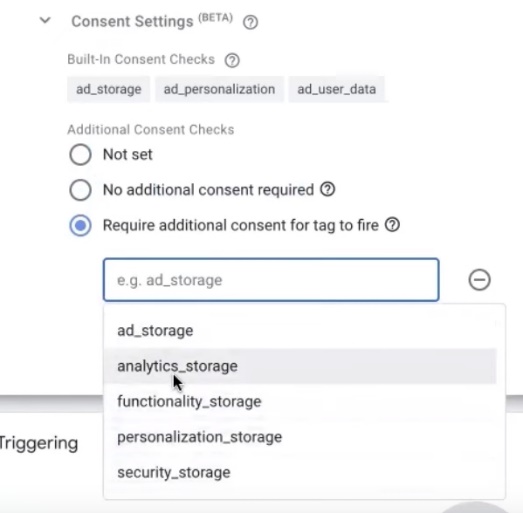
Trigger setting
And a trigger. A trigger, if we remember, is an event. What do we need to do? Find the right event, insert it. It’s easy enough to do. Go to Google Tag Manager, click the plus sign. “Trigger Configuration, Event.
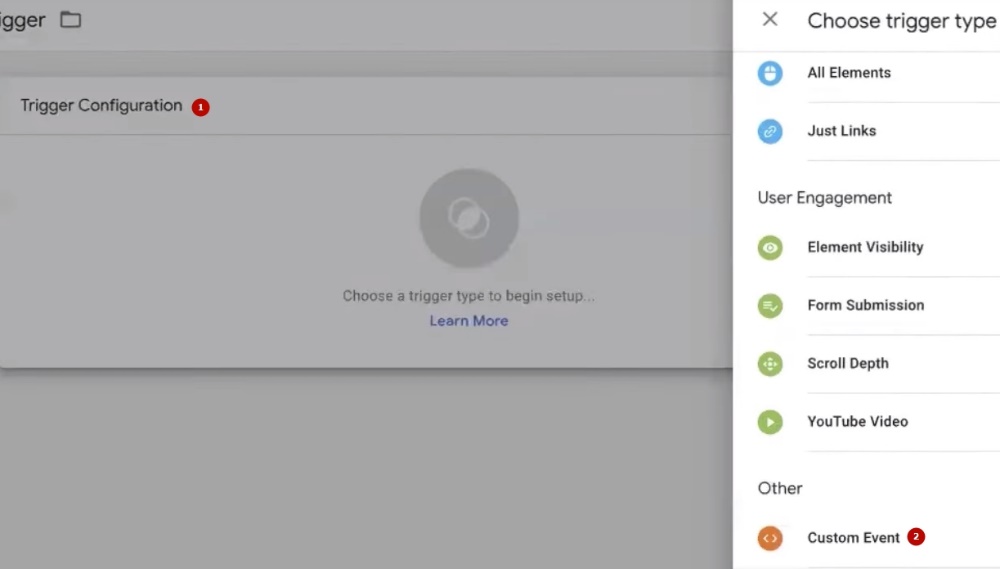
It will immediately offer to select a purchase. I set this purchase.

Next we need to save this conversion, tracking. I can call it “Purchase Google Ads.” I’m saving it.
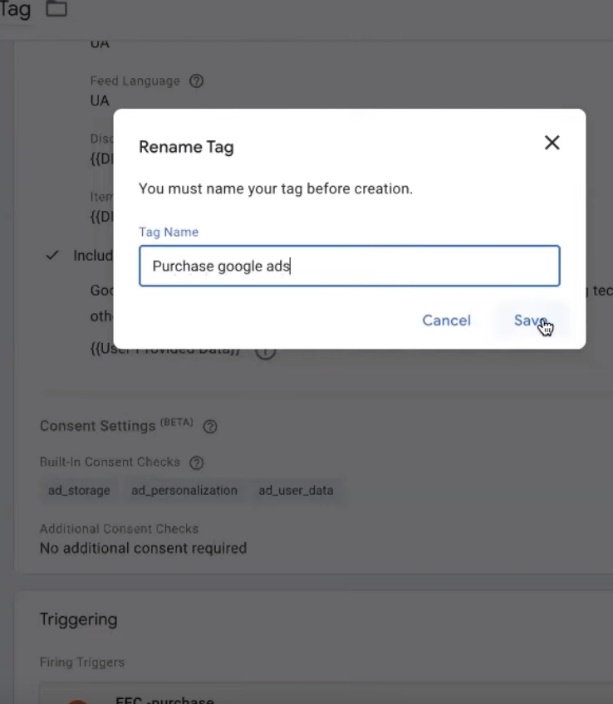
Checking the correctness of the created tag
Now it’s important! We need to check if it works or not. And click Preview, you have to make sure that it actually transmits all the data.

This is a mandatory set of actions for almost any project, any niche. Click “Continue.” Close the links. Press “Preview” again. Copy our product card. Open it. Let’s say we go to some product card, again make a test order. We go to our cart, place an order. It’s all filled out, I’m coming to pay. Confirming the order. Almost confirmed.
Now go back to the window, find purchase and you should definitely see this conversion. More precisely, go to Summary once again and see how many times each of the tags worked.

It is important that the purchase Google Ads worked only once. Click, this is the sixty-sixth line purchase, click, switch to values and look. The transaction ID was needed – it is passed. Fid country, set manually – passed. Hash data and email, phone number – transmitted. The feed language was set manually, you don’t have to set it. Conversion value and order amount are transmitted. A new order has been placed. Item-sys are transferred. There are ID and google_bussines_vertical, quantity, price.
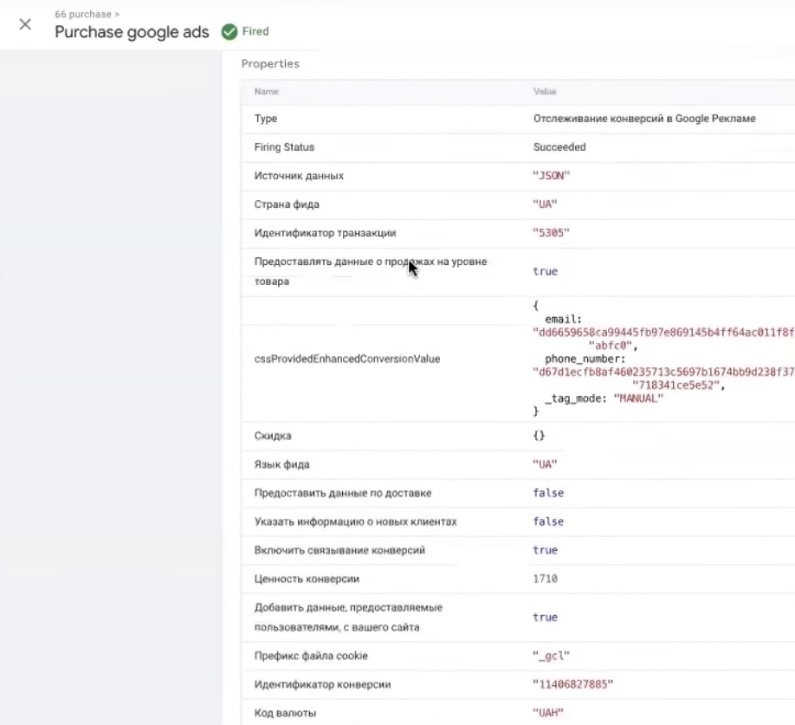
If there’s an extra data set, everything is super transferable. The vendor number and the label are there. All that’s left is to confirm by publishing the container. Done.
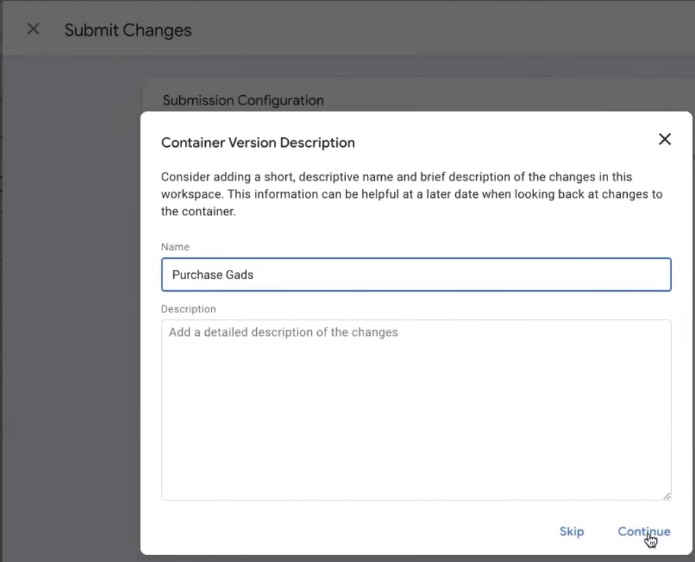
Summary. Announcement of the next video
Now in fact, if you set up the fourth analytics as it is now, if you have implemented the Google Ads conversion code – in fact, you can already start creating a normal adequate Performance Max and launch advertising campaigns. Since at the beginning of this great video I promised that we will make a manual that will go straight to the max on the stuffing – we will also fine-tune dynamic remarketing. This will be in the next video block.

